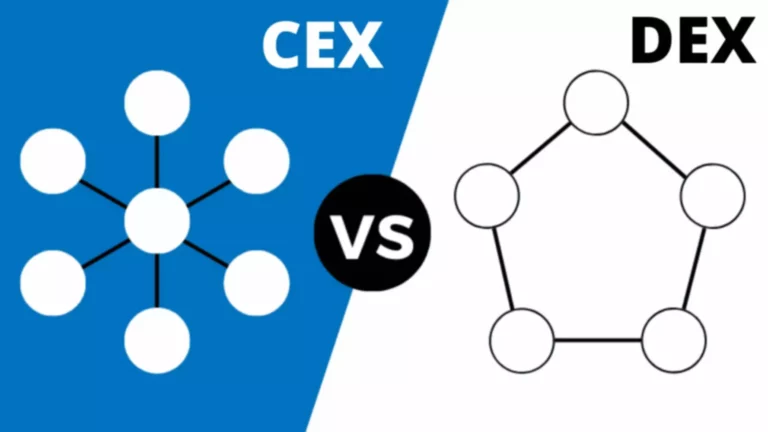This explains the upper than normal wind anomalies across southern Europe and the reduction of wind in comparison with normal across northern Europe throughout. It is obvious to see that there is an obvious response in surface winds throughout Europe (image below). However, by days 45 to 60 (D45-60), the signal is far more washed out throughout Europe with tentative signs of beneath regular from the UK to Iberia, and Scandinavia to SE Europe, however barely above normal winds from the North Sea to the central Mediterranean. The other sort is a cut up the place the polar vortex is also displaced off the pole, however it additionally breaks up into two distinct vortices, changed with greater geopotential heights over the pole. However, it is essential to note that some displacement events can finally become split events, significantly over longer persistence instances.

The differences within the proposed definitions make an inter-comparison harder, and subsequently reaching agreement throughout the scientific neighborhood on a regular definition to define events, notably for the applying of forecasting, is critical. There is consensus throughout the meteorological neighborhood, that for the purpose of operational forecasting, taking the 10hPa zonal mean zonal wind at 60-90N is a simple and robust methodology to determine a serious SSW event. The stratosphere is the layer of the ambiance extending from ~6 miles to ~31 miles above the surface. The stratospheric polar vortex (we bet you have heard of the polar vortex!) resides in this area, and may significantly influence climate within the mid-latitudes.
How To Improve Power Outage Prediction And Response
With large land masses within the Northern Hemisphere compared to the Southern this results in extra Rossby waves and so SSW occasions are largely a Northern Hemisphere centered phenomenon. There is solely one recognized exception to this; in September 2002, a serious warming was noticed for the first time within the stratosphere in the Southern Hemisphere. Only Rossby waves with the best spatial scales are in a place to spread upward into the stratosphere.

When the Rossby waves are robust, their amplitudes grow with height into the stratosphere where the waves break, similar to on a seashore. If these waves are strong enough, they may decelerate the jet sufficiently in order that the westerlies turn easterly. Such a change in air flow https://www.xcritical.com/ disrupts the stratospheric polar vortex either by displacing it from its regular location over the pole or splitting it into two daughter vortices. This descent causes the air to compress and its temperature rises dramatically, sometimes by greater than 50°C in just a few days.
But a weaker jet stream means much less move of gentle Atlantic air, weakening areas of low stress and shifting the jet stream additional south. This leads to high stress over the North Atlantic, ‘blocking’ that move of gentle Atlantic air and dragging in cold continental air from the east. This can result in a displacement or splitting of the polar vortex, so instead of chilly air being locked above the polar area, it can push further south into the mid-latitudes. Since earlier this yr, the term ‘SSW’ or ‘sudden stratospheric warming’ has turn into quite a buzzword inside the vitality industry. This blog will goal to assist demystify what an SSW is, and how utilizing analogues might help wind predictions on the sub-seasonal time scales. For sailors, understanding what SSW means can be an necessary a part of guaranteeing protected navigation and ensuring that they stay on track during a voyage or race.
Tips On How To Define An Ssw
In order to accurately read and interpret a wind path chart, sailors should first understand how each level on the compass relates to its corresponding degree range when reading from left to proper on a chart or graph (from North via West). The degree range for south-southwest winds (SSW) is between 180° and 202.5° – which corresponds with the lettering S (for south) directly above it on the chart or graph being used as a reference level (see illustration below). As discussed in a recent MetDesk blog, there’s significant variability in phrases of floor temperature response following displacement events, subsequently it’s not stunning to see an identical response for wind anomalies. An evaluation of the unfold exhibits there is a rather more of a variety in uncertainty and variability within the pressure sample after displacement events (not shown), therefore the more washed out anomaly signal. Looking at the following 60 days after the onset of the SSW, it is clear to see there are significant alterations to the pressure pattern throughout the northern hemisphere.

A decrease of between 10 to 20% is observed from the UK, North Sea into Scandinavia all through, and throughout Germany and Eastern Europe during the first 15 days. Positive anomalies could be seen across Iberia all through, with at least a 10% improve D1-15 and D45-60, and 20 to 30% improve for SE Spain and NW Iberia for every period respectively. The most anomalous wind response was throughout the NW tip of Spain D45-60, that includes a 30% increase in wind compared to regular. Historic SSW events have been determined by wanting on the zonal mean zonal wind (ZMZW) for 60-90N at 10hPa. When the ZMZW fell below 0m/s, it needed to persist for at least 5 days to be considered as a serious SSW occasion.
Insights From The Community
A subjective approach is used to categorise the events into break up or displacements based mostly on their synoptic look over the Northern Hemisphere on the 5 days following the beginning date. Overall, a total of 28 main SSW occasions had been found from 1979 to 2016, of which 19 have been displacement occasions and 9 have been splits. This preconditions the polar vortex, permitting SSW’s to happen extra simply (Labitzke, 1982; Naito et al., 2003). Gray (2004) then went on to suggest solar min + easterly QBO as properly as photo voltaic max + westerly QBO can reinforce each other thus resulting in major SSWs. In February 2019, an SSW occasion caused the stratospheric polar vortex to separate in two causing the polar vortex to move south into North America bringing extreme low temperatures to the Great Lakes area. Weather techniques normally arrive over northern Europe from the west — with a circulate of relatively delicate air coming in off the Atlantic.
As was to be expected, each displacement and split occasions are characterised by high latitude blocking across the North Pole and Greenland, although it is clear to see the anomalies are considerably larger with the split events. The highest anomaly noticed is a +12 hPa anomaly over the pole through the 15 to 30 day interval. The tropospheric polar vortex is a standard atmospheric characteristic that affects our weather each winter. The lagged response of surface wind following a cut up event show a means more noticeable reduction in winds relative to regular throughout Northern Europe, and a rise in winds throughout SW Europe throughout.
Is 15 Mph Wind Strong For Boating?
These are giant meanders in high-altitude winds and happen within the ambiance as a end result of Earth’s rotation. These types of waves are generated by flow over mountains and continental land-sea temperature contrasts. They can be generated by year-to-year adjustments in massive scale weather patterns corresponding to El Nino.
- A decrease of between 10 to 20% is noticed from the UK, North Sea into Scandinavia throughout, and throughout Germany and Eastern Europe through the first 15 days.
- Two recent MetDesk blogs launched by senior MetDesk power meteorologists talk about the influence cut up & displacement SSW occasions have on Northern Hemispheric temperatures.
- When the ZMZW fell beneath 0m/s, it had to persist for no less than 5 days to be thought-about as a major SSW occasion.
- These large-scale breaking waves (analogous to breaking waves on the shore) interact with the sturdy zonal move of the SPV, whereby the added momentum acts to decelerate the normal westerly move.
It has been widely accepted that sudden stratospheric warming occasions are attributable to the upward propagating waves, penetrating the stratosphere, typically initiated by blocking within the North Atlantic and North Pacific. These large-scale breaking waves (analogous to breaking waves on the shore) interact with the sturdy zonal move of the SPV, whereby the added momentum acts to decelerate the conventional westerly circulate. By the laws of physics (which I won’t clarify now), the deceleration of the winds causes the ‘sudden warming’. A sudden stratospheric warming is a significant disruption of the stratospheric polar vortex that begins with large-scale atmosphere waves (called Rossby waves) getting pushed higher into the environment.
Over the next weeks, the action of additional Rossby waves permit the easterly winds to burrow down by way of the stratosphere. The wintertime polar stratosphere is managed by a normally sturdy westerly cyclonic vortex (aka stratospheric polar vortex- SPV) located in both hemispheres, pushed by the robust equator to pole temperature gradient. (As the North pole tilts away from the sun throughout winter, temperatures cool at the pole resulting in elevated equator to pole thermal gradient). You can think of the SPV as the stratospheric equivalent of the tropospheric jet stream that brings a lot of the wet/windy weather to Europe.
What Impression Is The Coronavirus Pandemic Having On The Accuracy Of The Weather Forecast Models?
By having the power to precisely identify when they’re sailing into south-southwest winds, sailors can ensure that they’re making essentially the most efficient use of their sails to be able to get where they want to go as rapidly and safely as possible. Additionally, being aware of when South-SouthWest winds could additionally be present can help sailors plan forward so that any potential issues attributable to strong winds can be averted earlier than they happen. Many research have focussed upon the surface climate of temperature & MSLP anomalies over the Northern Hemisphere (Baldwin and Dunkerton, 1999; Cohen et al., 2007; Mitchell et al., 2013); nevertheless, there was little or no investigation into the effect of wind. Knowing there are distinct alterations to storm tracks that succeed SSWs, notably cut up occasions, it may be inferred that winds may be a predictable variable. The variations between beneficial definitions affects the interpretation of detected SSW frequency.
If waves are robust sufficient, the winds of the polar vortex can weaken a lot that they can reverse from being westerly to easterly. This leads to chilly air descending and warming rapidly, with the purple line on the graph showing the sudden leap in temperature. When the North Pole tilts away from the sun during the winter, the air above the pole turns seesaw protocol into extraordinarily cold, reaching temperatures as little as -80°C by December. Circulating round this chilly pool is the stratospheric polar vortex with an area of low stress at its centre. The vortex seems each winter in the stratosphere above the Arctic and exists until sunlight returns to the polar regions in the following spring.

SSW stands for “south-southwest” and is used to describe the path from which the wind is blowing at any given time. The diploma vary for south-southwest winds is between 180° and 202.5° (south wind (S) is 180°, while south-southwest wind (SSW) is 202.5°). This signifies that if a sailor have been facing into the wind, they’d be looking at a compass bearing of both 180° or 202.5° relying on the precise direction of the wind at that second in time. Sailors are all too acquainted with the ever-changing course of the wind, and the phrase “SSW” is one that’s often heard on the deck of a ship or in a crusing climate report.
